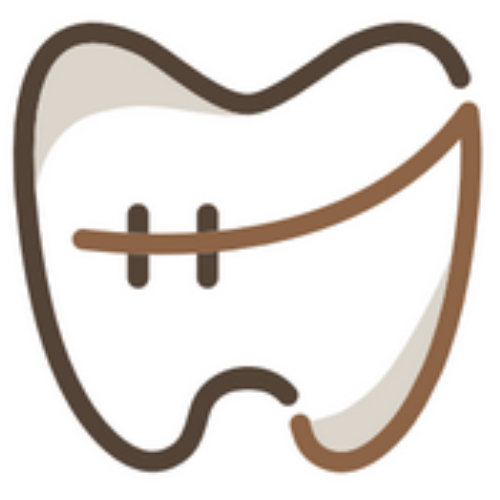When you notice your child’s teeth don’t quite line up correctly, it’s natural to feel concerned. A crossbite is one of the most common orthodontic issues affecting children, occurring when upper teeth sit inside the lower teeth rather than outside them. This misalignment can happen with a single tooth or multiple teeth, affecting either the front or back of the mouth. While it might seem minor, a crossbite can lead to significant health problems if left untreated. If you’re searching for “orthodontics near me” to address your child’s dental concerns, understanding crossbite is essential.
Understanding the Root Causes of Crossbite
Crossbites develop from a variety of factors, both genetic and environmental, that affect jaw and tooth development during crucial growth years.
- Hereditary factors: If parents had jaw or tooth alignment issues, their children are more likely to experience similar problems since jaw size and shape are largely determined by genetics
- Prolonged thumb sucking or pacifier use: Extended use beyond age three applies consistent pressure on developing bones, potentially causing the upper jaw to narrow
- Delayed loss of baby teeth: When primary teeth don’t fall out on schedule, permanent teeth may erupt in incorrect positions, leading to crossbite
- Mouth breathing habits: Often caused by chronic allergies or enlarged tonsils, this affects tongue posture and prevents proper upper jaw expansion during development
Recognizing the Warning Signs Early
Parents can often identify potential crossbite issues by observing their child’s smile and bite patterns, though professional diagnosis is essential for accurate assessment.
- Visual misalignment: Upper teeth sit behind or inside the lower teeth rather than slightly overlapping them when the mouth is closed
- Facial asymmetry: One side of the jaw appears more prominent than the other, indicating an uneven bite pattern
- Chewing difficulties: Children may complain of trouble eating certain foods or experience jaw pain, especially after meals
- Speech problems: Difficulty with certain sounds can indicate a crossbite affecting proper tongue placement and oral function
Early detection, typically recommended by age seven, allows for the most effective intervention when searching for “orthodontics near me” for your child’s care. Professional evaluations include X-rays and dental impressions to determine the exact type and severity.
The Hidden Dangers of Delaying Treatment
Ignoring a crossbite can lead to cascading dental and health problems that worsen over time and become more difficult to correct.
- Uneven tooth wear: Teeth grind against each other in abnormal positions, causing chips, cracks, or premature damage requiring costly repairs
- Asymmetric jaw growth: Permanent facial imbalance develops where one side appears larger, affecting appearance and self-confidence throughout life
- TMJ disorders: Constant stress on the jaw joints leads to chronic pain, clicking sounds, and difficulty opening or closing the mouth comfortably
- Increased dental decay: Misaligned teeth are harder to clean properly, elevating the risk of cavities and gum disease in hard-to-reach areas
- Self-esteem issues: Children may struggle socially due to appearance or speech difficulties during crucial developmental years when peer acceptance matters most
Modern Solutions for Every Child
Modern orthodontics offers several effective treatments tailored to a child’s age and crossbite severity, ensuring personalized, comfortable care for optimal results.
- Palatal expanders: These devices gradually widen the upper jaw in younger children (ages 7-10) by applying gentle pressure, creating space for proper tooth alignment with stable, permanent results
- Clear braces for kids: Advanced clear aligner systems provide comfortable, removable aligners that appeal to self-conscious children who want effective treatment without a metallic smile
- Traditional braces: Modern brackets offer precise control for complex crossbites and are smaller and more comfortable than ever before
- Combination therapy: Some cases require starting with a palatal expander followed by braces or aligners to fine-tune positioning and achieve optimal results
Treatment duration typically ranges from six months to two years. After active treatment, wearing retainers prevents teeth from shifting back. Many practices now offer convenient retainer same day services for quick replacements.
The Perfect Time to Begin Treatment
Timing is critical for crossbite correction and can significantly impact treatment outcomes, duration, and the need for invasive procedures later in life.
- Early evaluation: The experts recommend that all children have an orthodontic assessment by age seven to identify developing problems
- Growth advantage: Between ages seven and ten, jaw bones are more malleable and responsive to intervention, making this the ideal window for correction
- Prevention benefits: Early treatment can eliminate the need for tooth extractions or jaw surgery in severe cases that would otherwise require surgical correction
- Never too late: Older children and teenagers can still achieve excellent results, though treatment might take slightly longer due to completed bone development
Take Action for Your Child’s Smile
Crossbites are treatable conditions that shouldn’t be ignored. Early intervention offers the best outcomes, preventing serious complications while supporting healthy jaw development and confident smiles. Thousand Smiles Orthodontics in Austin combines cutting-edge technology with compassionate, personalized care to transform young smiles.
Expert orthodontists provide evidence-based treatments with attention to facial aesthetics, ensuring your child receives exceptional care in a welcoming, modern environment. Take the first step toward your child’s healthy, beautiful smile today.
